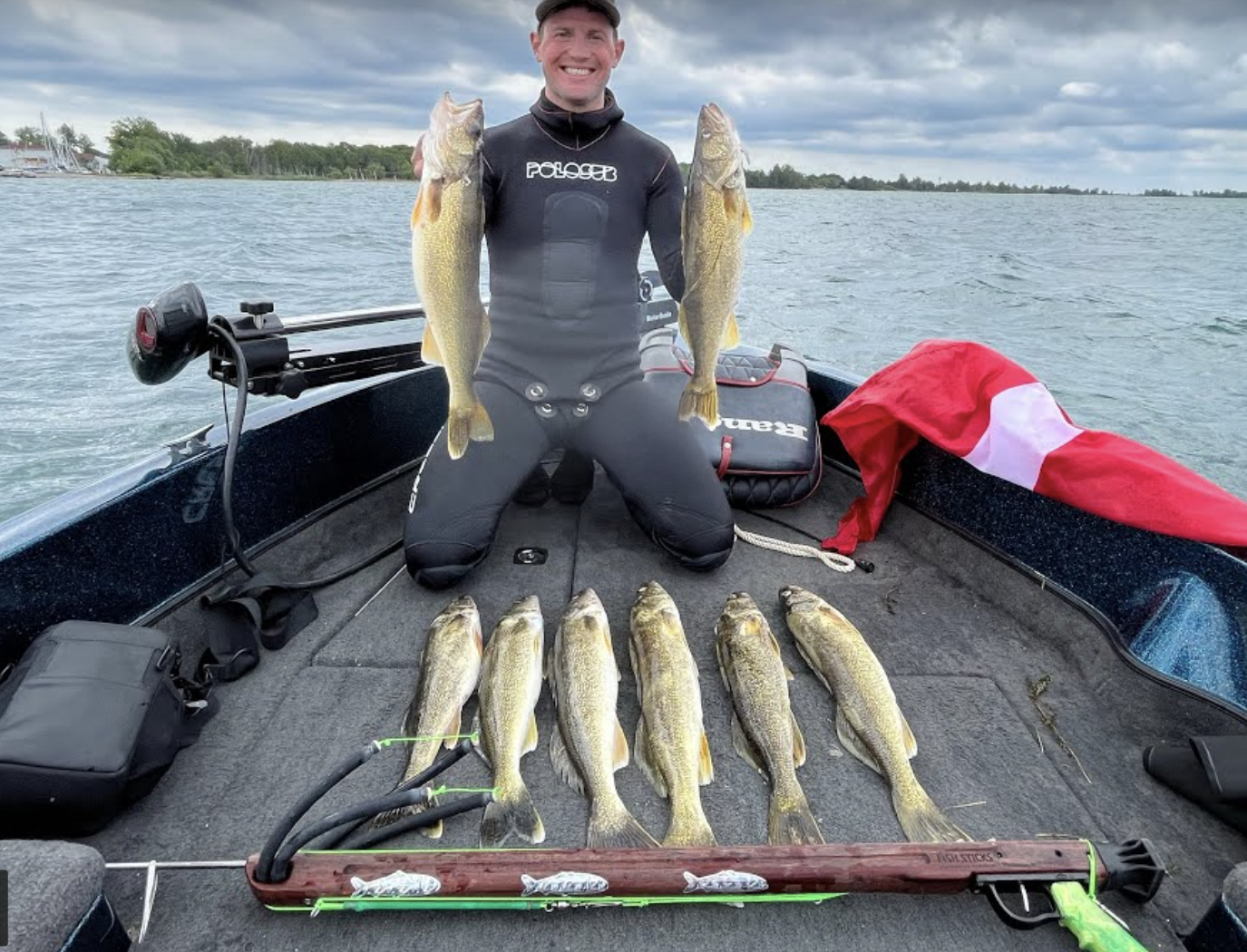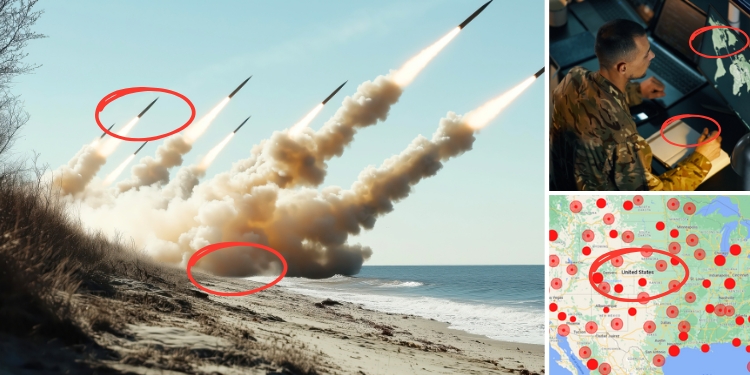Shooting Walleyes in the Great Lakes Is Growing Because of This Spearfisherman

Some might call it sacrilegious. But for Jon Durtka, the outcome of spearing a keeper walleye in Lake Huron isn’t that much different than catching one with a rod-and-reel for the cooler. Targeting game fish with a speargun is no less sustainable than hook-and-line fishing, Durtka says, and it’s arguably more challenging. Which is why he and a few other divers from Michigan are trying to normalize the sport in the Great Lakes even as traditionalists oppose their efforts.
Durtka’s Instagram account and YouTube channel feature all kinds of fascinating spearfishing videos, from doubling up on a pair of big walleyes to spearing his first-ever lake trout at a depth of 50 feet. It’s not all kill shots, though. In one clip from 2023, Durtka and another diving buddy help a smallmouth bass by pulling an old dropshot rig out of its mouth.
“As soon as I got into it, I was like, ‘This is the most amazing thing in the world,’” Durtka tells Outdoor Life about his first experience spearfishing the Great Lakes six or seven years ago. “It’s like swimming in a Cabela’s aquarium. But it’s the real world, and it’s wild out there.”
Read Next: The Ultimate Guide to Spearfishing
In the years since, Durtka has become a leading advocate for spearfishing the Great Lakes. He is now the president of the Michigan Spearfishing Association, and he’s been working with state fisheries managers for several years to expand spearfishing opportunities to include game fish. That regulation change became official in 2022, and Michigan spearfishermen can now target walleyes, northern pike, and lake trout in certain portions of Lake Huron and Lake Michigan. Spearfishing for “rough fish” like carp, catfish, and suckers has long been legal in Michigan, Durtka explains, but those fish aren’t typically harvested for the dinner table.
“I just thought it was kind of weird at first — that I could keep fish I caught with a hook-and-line, which I’ve been doing my whole life, but as soon as I switch over to a spear gun, I can’t do that,” says Durtka, who grew up fishing in Michigan. “I thought it was really fun, but it also felt like a waste, because the whole point of [spearfishing] is to kill fish to eat, not to just kill and dispose of. And that’s a lot of what we were doing, just killing and disposing of fish.”
There are strict limits and gear restrictions around spearing game fish in Michigan, and the new regulations are part of an ongoing trial period, Durtka explains. Spearfishermen can’t target fish near docks or swimming areas, for example, and they can’t use scuba gear or underwater propulsion devices.
“Right now we’re looking forward at potential issues, and ways [spearfishing] can be detrimental, and we’re coming together to find creative solutions to these problems we can foresee,” Durtka says, “I mean, if we were to open up bass, and those bass are sitting on beds and then people start blasting six-pound females with eggs, that’s not gonna be great. So, we’re open to things like delaying harvest of largemouth and smallmouth bass until [after spawning season].”
Spearfishermen targeting game fish in Michigan waters are also required to keep close track of their harvests each month. And the past few years of data show the minimal impact that regulated spearfishing has had on game fish populations.
“In the first three years we didn’t even kill 1,000 walleye, and that’s between the 330 or so people who are doing it,” Durtka points out. “But [hook-and-line] fishermen, they’re killing 230- or 240,000 walleyes on Lake Huron every year.”
Durtka adds that spearfishermen tend to be even more selective than other anglers in terms of the fish they choose to harvest. They’re limited to shooting what they can keep, so “they’re not sifting through 10 perch to get one big enough,” he says. In other words, there’s no bycatch or catch-and-release mortality.
Read Next: South Dakota Bowfisherman Shoots 6-Pound Brown Trout, Setting a New State Record and Drawing the Ire of Purists
Besides, freediving is so physically challenging and effort-intensive that most everyday anglers will have a hard time spearing anything. The sport also requires a fair bit of gear, including a wetsuit thick enough to withstand the cold temps of the Great Lakes. During a typical dive, Durtka will target structure (like a wreck, a jetty, or a rock pile) in anywhere from 10 to 50 feet of water, and he can hold his breath for more than two minutes.
“The fish can really sense intentions to some degree, and if you come in kicking very aggressively right at the fish, they’ll swim away,” he says. “But if you come down real slow, and you’re not really staring at them or going after them, they’ll usually swim out a ways … I just tell people to be slow and smooth.”
He says Michigan’s Natural Resources Commission is currently reviewing the MSA’s most recent proposal, which would expand spearfishing for all game fish species except sturgeon and muskie on the remaining portions of Lakes Michigan, Erie, Superior, and Huron. And although he continues to get pushback from old-guard anglers, who hate the idea of spearing a laker or walleye, he says all he can really do is be polite to his fellow fishermen and point to the science.
“It’s the Great Lakes, and we have so much commercial fishing and charter angling. What I try to tell [critics] is, you know, it’s just another method,” says Durtka. “It’s like, ‘Hey man. We just want to kill a good fish to eat [too].’”
Read the full article here









